Name Michimasa Fujino Role Engineer | ||
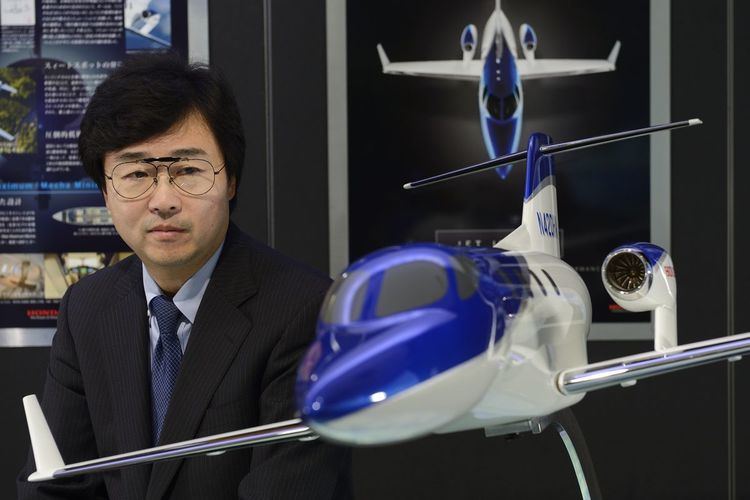 | ||
Wghp newsmaker michimasa fujino hondajet
Michimasa Fujino (藤野 道格, Fujino Michimasa) is a Japanese engineer and businessman, the founding president and CEO of Honda Aircraft Company, the Honda subsidiary. At Honda Aircraft, he is responsible for Honda’s overall aircraft business strategy, operation, design, development, certification, marketing, sales and production of the innovative HondaJet. Since 2015, he has also concurrently served as a managing officer of Honda Motor Co., Ltd.
Contents
- Wghp newsmaker michimasa fujino hondajet
- The CJI Interview Michimasa Fujino Honda Aircraft
- Education
- Fellowships
- Career
- 19841997
- 1997Current
- Innovations and designs
- Over The Wing Engine Mount OTWEM Configuration
- Natural Laminar Flow Airfoil
- Composite Fuselage
- Advanced Cockpit
- Selected publications
- Honors and awards
- References
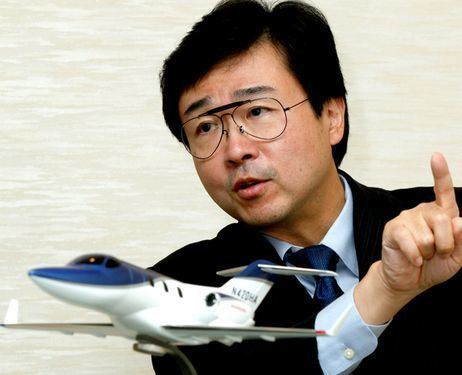
Fujino has been passionately devoted to fulfilling Honda’s dream to take personal mobility skyward. Not only did he lead the design, certification, production and sales efforts of the HondaJet, he has been a driving force behind the formation and continued growth of Honda Aircraft.
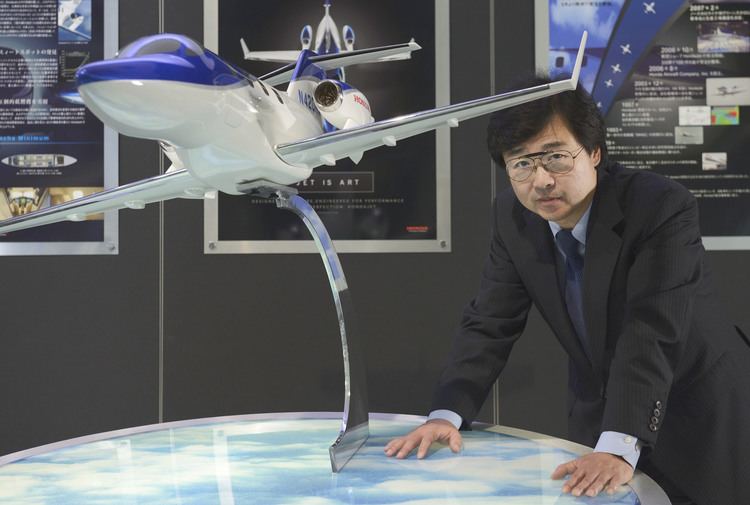
Fujino has received the three most prestigious awards in aerospace industry, which is the American Institute of Aeronautics and Astronautics (AIAA) Aircraft Design Award (2012), the SAE International the Clarence L. Kelly Johnson Aerospace and Vehicle Design Award (2014), and the ICAS Award for Innovation in Aeronautics. As the first and only person to receive these awards simultaneously, Fujino has been well-regarded for his high pioneering contributions to aerospace and aircraft design with the HondaJet.
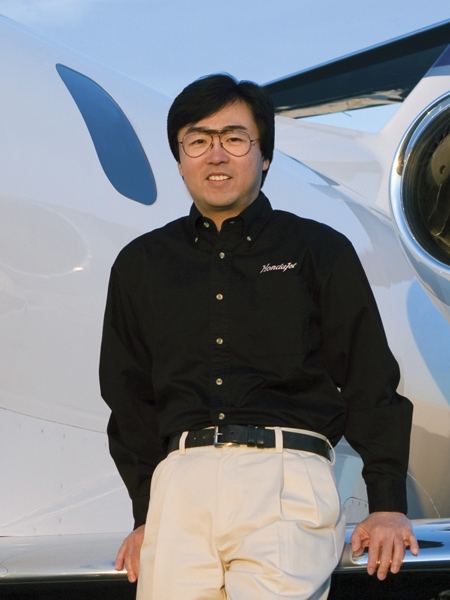
The CJI Interview - Michimasa Fujino, Honda Aircraft
Education
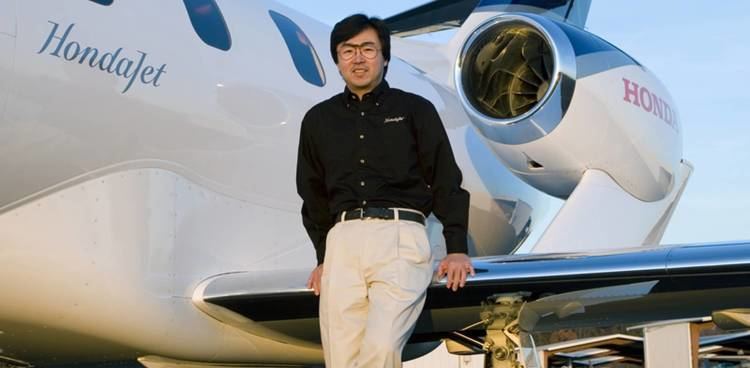
Fujino holds a Bachelor of Science degree and Doctorate degree in aeronautical engineering from University of Tokyo.
Fellowships
Career
Prior to becoming president and CEO of Honda Aircraft, Fujino rose through the engineering ranks to become a vice president with Honda R&D Americas Inc., and named the large project leader for the HondaJet program. In this capacity, he led all Honda’s aircraft researches including theoretical analysis, experimental verification and flight testing, which eventually became the HondaJet. The HondaJet received United States Federal Aviation Administration Type Certification in 2015 and the company began customer deliveries.
1984–1997
Fujino joined Honda R&D Co., Ltd. in Japan in 1984, after graduating from the University of Tokyo with a degree in aeronautical engineering. He spent the first two years of his career in the automobile research division working on the development of a new electrical control steering system. Fujino was then assigned to a research project in the field of aviation.
Fujino and the Honda aviation team was transplanted to a leading research center for advanced aeronautics at Starkville, Mississippi in 1986. The first experimental jet was an airplane modified from an existing single-engine turboprop plane, but the second jet was built from scratch. It was a pure experimental aircraft that consisted of various new technologies. Fujino and the team generated many drawings and performed numerous stress analyses, conducted structural test, system test, and ground vibration tests, and even had to sand tooling molds by hand. Spending enormous amount of time and effort on this project, Fujino has come to understand the theory needed to design an airplane. At the same time, he has gained advanced technology skills with sufficient experience to fabricate and develop an airplane.
1997–Current
During the research project, Fujino envisioned a great potential for high performance light jet. He thought if an airplane could be designed having both high fuel efficiency and high speed, without sacrificing cabin volume and luggage space, there would be a potential demand in the business jet markets. Fujino continues to develop various new technologies in order to achieve his goal.
After Fujino's return to Japan, he pitched an idea of Over-the-wing engine mount, and was assigned large project leader for the HondaJet program in 1997. Along with his passion, determination, and responsibility as a leader to develop HondaJet, Fujino took on the role of president & CEO of Honda Aircraft Company in August 2006. He now resides with his wife and three children in Greensboro, North Carolina.
Innovations and designs
Fujino’s clean sheet design for an advanced light jet that could achieve both high speed and high fuel efficiency led to the development of key technologies and concepts. He discovered the optimum Over-The-Wing Engine Mount configuration to reduce wave drag at transonic speed. This aeronautical breakthrough was proven to dramatically enhance aircraft performance, fuel efficiency, and passenger comfort (spacious and quiet cabin).
He also developed a new natural laminar flow (NLF) wing and fuselage nose for the light jet and a new hybrid composite structure, which contributed to a lighter airframe. These three innovations allow the HondaJet to achieve highest speed, superior fuel efficiency and the most cabin and luggage space over other jets in its class.
Fujino stated that their objectives was to design and develop an advanced light jet that would create new value for personal and business aviation.
Through Fujino's practical experience building and designing airplane, and his thorough understanding of advanced technology in aviation, he was able to pursuit of future airplane design concept- HondaJet.
Over-The-Wing Engine Mount (OTWEM) Configuration
Where most aircraft the engines are below the wings or attached to the rear fuselage, Fujino's idea was to locating the engine nacelle over the wing. The OTWEM design improves performance and fuel efficiency by reducing aerodynamic drag. It also reduces cabin sound, minimizes ground detected noise, and allows room for passengers, luggage, as well as a private lavatory.
Natural-Laminar-Flow Airfoil
In order to reduce aerodynamic drag and maximize HondaJet's performance, Fujino has applied the NLF technology on the main wing airfoil (NLF wing) and fuselage nose (NLF nose).
Composite Fuselage
By applying composite material to the fuselage, which is created from the co-cured integral structure and honeycomb sandwich structures, Fujino allowed the best cost-performance of the jet and contour for aerodynamic.
Advanced Cockpit
Fujino's cockpit design has achieved a high degree of flight safety with more space and greater visibility provided to the pilot. The Garmin G3000 avionic system with the dual touch-screen controller and three 14-inch landscape high-resolution displays offer enhanced navigation, flight planning, and control.
Selected publications
Honors and awards
Fujino has received international recognition for his pioneering contributions to aeronautical research and design. He has been the recipient of numerous international awards and distinctions, including the International Council of the Aeronautical Sciences (ICAS) “Award for Innovation in Aeronautics” (2014), SAE International “Clarence L. (Kelly) Johnson Aerospace Vehicle Design and Development Award” (2014), the American Institute of Aeronautics and Astronautics (AIAA) “Aircraft Design Award” (2012), and Aviation Week and Technology’s “Vision Award” (2008). His extensive research and theories on aircraft configuration design, advanced aerodynamics and aeroelasticity have been published in numerous technical and academic journals, and he holds several patents for aircraft design. Fujino has also been recognized in the industrial design (ornamental design) field and received the Good Design Gold Award (2007) and Japan Industrial Designers’ Association Design Museum Award (2011).
